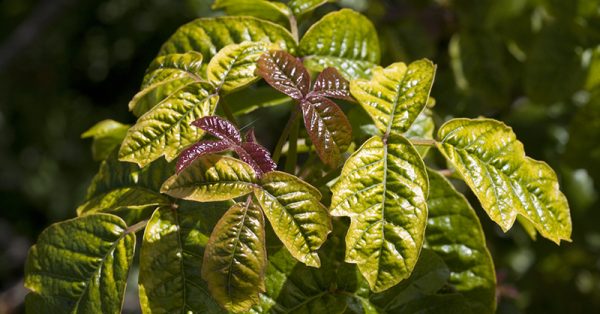
A: No – not everything you put on your skin will make its way inside. Skin absorption is selective about what is allowed in and what is kept out.
To understand how the absorption of chemicals through the skin is determined, we need to go back to the beginning of life on land.
Eons past, when plants and animals left the watery confines of the sea to inhabit the dry land, they had to devise a means to hold onto the water in their cells – for all living cells are a water-based system. They had to prevent its evaporation into the drier atmosphere that now surrounded them. The near-universal solution to this dilemma was to develop a covering or ‘integument’ that could prevent the loss of precious internal water.
It is our skin’s permeability barrier that allows us to be ‘grapes’, and not ‘raisins’. It also prevents us from ballooning into ‘watermelons’ when we bathe or swim.
Thus, our skin was designed by evolution to hold our body’s water inside, to prevent it from evaporating away, like water from a shallow bowl. And all of these integumental barriers – whether on plants or animals – use a coating of water-unfriendly materials (or ‘lipids’) to seal off their watery interiors from a desiccating environment outside. The differences between the barrier systems of a leaf or an insect or of humans lie only in the details of their lipid-based barrier systems.
The Basic Principles of Skin Absoption
Because our skin’s barrier was designed to prevent water-movement, it follows that small, water-friendly molecules – ones that readily dissolve in water (like sugar or salts) – are also prevented from moving in or out of the skin. Thus, for example, we don’t become salt-intoxicated when we swim in the ocean.
But the converse is also true. Our lipid-based barrier is not as efficient in excluding small, water-unfriendly or ‘lipophilic’ molecules. Those molecules, which prefer to reside in a fat-friendly environment or ‘solvent’ – can more easily traverse the skin’s lipid-based barrier and enter the body than can those water-friendly or ‘hydrophilic’ compoinds.
Take poison oak or poison ivy as an example. The chemical or ‘antigen’ in these related plant species, ‘urushiol’, is an organic molecule which is attracted to fat-friendly environments. When we brush against these plants, some of the antigen in their leaves and twigs can get past our skin’s barrier and reach the inner layers of our skin, where it can provoke an intense allergic reaction.
Urushiol is a very potent antigen. Most people when exposed to this antigen will become sensitized and mount an allergic reaction. But let’s pause here and look at that minority that doesn’t seem to become allergic after being exposed to it. Some (if not most) of these resistant folks have had the skin condition, ‘atopic dermatitis’.
In eczema or atopic dermatitis the skin’s barrier is impaired. Its lipid-environment is not holding back the loss of body water as efficiently as it should. Even their normal looking skin does not have a fully functional barrier system. Their leaky barriers are less friendly to lipid-soluble molecules like urushiol. Hence, less of this noxious substance is likely to enter their skin and incite an allergic reaction.
But on the other hand, allergic reactions to nickel-containing jewelry (or belt-buckles) are more common among people with atopic dermatitis than the general population. Their leaky barriers let water out and allow water-friendly salts, like nickel, in.
Knowledge of the skin’s barrier and its raison d’etre can help us understand which substances the skin is good at keeping out and which are likely to get in.
In the course of evolution, possession of a water-tight barrier was of prime importance, as opposed to a much lesser need to exclude small lipid soluble compounds, like urushiol. Hence we have fairly water-tight skin barriers that are somewhat lipid-leaky.
There was no poison oak or ivy on the African savannahs where early man evolved his integument. And not until more modern times has our skin been exposed to the panoply of organic compounds that are found in manufactured cosmetics and sunscreens. The fact that we are now learning that some of these materials get through the skin’s barrier and into our system should not be surprising – if you understand the skin and its barrier system.
But – to answer the last part of your question – no, you probably don’t need to worry much about this when you put various lotions and creams on your skin. The skin despite its vulnerabilities, is not like our GI tract, which is designed to absorb everything that comes its way. Skin still keeps most stuff out, and quite effectively.
Yet, we would suggest you think twice before putting foreign materials on your baby’s skin. Not only is the infant’s skin barrier not fully mature, babies have a much larger surface area to volume ratio. This results in higher concentrations of a substance once it penetrates the skin’s barrier. Then, too, babies’ detoxifying systems are immature, which could render them more vulnerable to toxins. And their other organ systems are also immature and may be more vulnerable to injury.
Thus, for example, we do not recommend use of sunscreens on infants six months or less of age. There is no need to expose them to unknown dangers when they can be easily shielded – physically – from the sun’s rays.
Leave a Reply